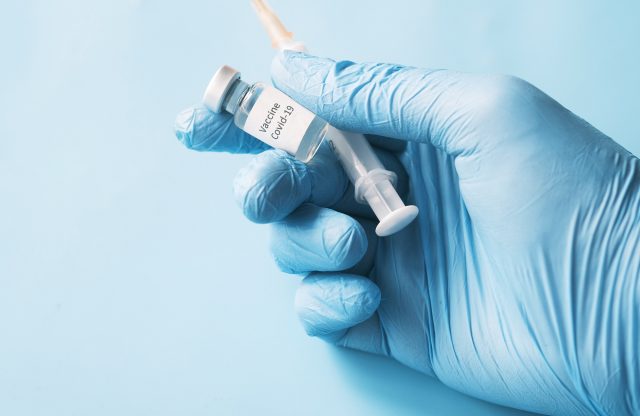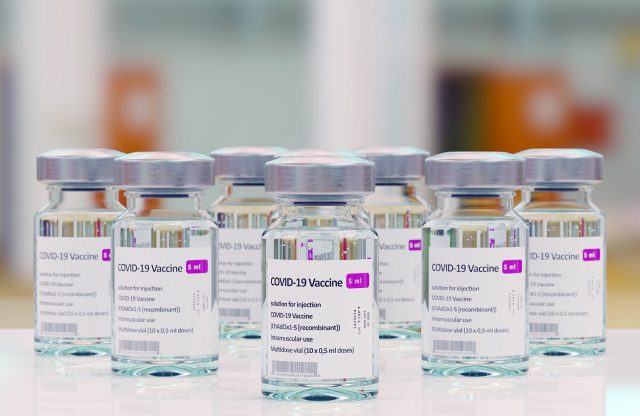Dr Robert Hess: Update on new mutations

Dr Robert Hess – 09/14/2021
Dr Robert Hess: Update on new mutations and what you need to know about COVID-19 variants.
As experts in the field of human and molecular genetics and thus also on the topic of mutations, we provide regular updates and forecasts of where the pandemic might be heading. Recently, new discoveries have come into the frame, so we have summarized these findings for you and added our own assessment.
Several thousand COVID-19 variants exist around the world, but most of them do not change the way the virus acts. So far, only a few mutants have evolved from the original strain that have given the virus an advantage and accelerated the course of the pandemic. Experts are constantly working to figure out which variants we should focus on and how they change the way in which we combat COVID-19. At the moment, there are only a handful of COVID-19 variants that give us cause for concern. The current “variants of concern” (VOCs) all have mutations in the virus’s spike protein, which acts as a key to break into cells and infect them. This is a source of concern because the spike protein from the original version of the virus is what the scientists have used to design all three authorized vaccines. It is also what monoclonal antibody treatments latch on to so the virus is unable to get into your cells, effectively neutralizing the threat. So far, none of these mutations have changed the virus enough to undercut the vaccines. The current VOCs listed by the WHO are Alpha, Beta, Delta and Gamma SARS-Cov-2 variants.
The Delta variant is our biggest concern at the moment. Identified in India in October 2020, it gained dominance quickly after it was first reported in the U.S. in March 2021. In fact, Delta has now spread to such an extent that it has splintered into several subvariants, referred to as “Delta plus”. Delta plus variants have a mutation in the spike protein found in both the Beta and Gamma variants that may help to evade neutralizing antibodies. While around 13% of infections in the U.S. are from Delta plus variants (AY.1, AY.2, and AY.3), they still behave similarly to the Delta variant. The AY.3 subtype is one of the most recent descendants of Delta but among the most notable. Experts suspect that it is potentially better at escaping the immune system. The variant is most dominant in the US where it makes up roughly 9% of all cases. Along with AY.1 and AY.2, it is now also a variant of concern (VOC). Together, the Delta lineages make up 80-95% of sequenced infections in the U.S. Like other VOCs, Delta has multiple mutations in its spike protein. What makes Delta unique is that it is much more efficient at latching onto your cells and is much more contagious. As already stated, Delta is about twice as infectious as the original strain and estimated to be 60% more infectious than Alpha. People infected with the Delta variant have been reported to have viral loads 1,000 times higher than other variants. Besides the above, five variants of interest (VOI) are currently (as of 09/07/2021) listed and followed with special attention: Eta, Iota, Kappa, Lambda und Mu. While the first four have been under special observation for at least one and a half months, Mu was only classified as a variant of interest by the WHO towards the end of August 2021 due to outbreaks in Europe and increasing infections in Colombia and Ecuador, where the Mu variant is responsible for 39% and 13% of COVID-19 infections. Mu was first sequenced in Colombia in January 2021. So far, it has been documented in 39 countries, including the U.S. However, the percentage of COVID-19 cases triggered by the Mu variant in the U.S. has been falling since July, and the Mu variant caused only about 0.2% of COVID-19 infections in the country in the week of 20th ‑ 27th August. What worries scientists is that the Mu mutations could indicate possible resistance to vaccines. Early research from Italy shows Mu is susceptible to antibodies produced by the Pfizer-BioNTech vaccine, but they don’t work as well as they do against the original Wuhan strain or Alpha variant. In addition, the combinations these mutations indicate a risk of immune resistance. Early research from the U.K. found the specific mutations may help Mu escape the immune system. Further studies are needed for an accurate assessment.
While much of the world’s focus has been on the Delta variant of coronavirus, a new variant was identified in South Africa in May 2021. Currently referred to as the C.1.2 variant, it is yet to be called a VOI or VOC by the WHO, but is drawing the attention of scientists due to the number and types of mutations it contains and the speed at which the mutations have occurred. With 59 detected mutations, C.1.2 is reported to be the variant carrying the most mutations since the original “wild” variant emerged in China. The variant has emerged from the C.1 lineage which was one of the coronavirus lineages that dominated during the first wave of infections in South Africa in mid-May 2020. Although levels of the C.1.2 variant are still low among the South African population, it remains a concern to local public health experts and scientists across the world. Currently, Delta remains the dominant variant in Europe, the U.S. and much of the world. For a variant to become dominant it will have to outcompete Delta. That will mean increased transmissibility, being able to bind to human host cells and infect people quicker than Delta currently does. Time will tell whether any of the variants mentioned here will prevail against Delta and, if so, to what extent. The WHO, public health experts and scientists will continue to closely monitor the course of events. We will also continue to keep you informed about any news on this front.

